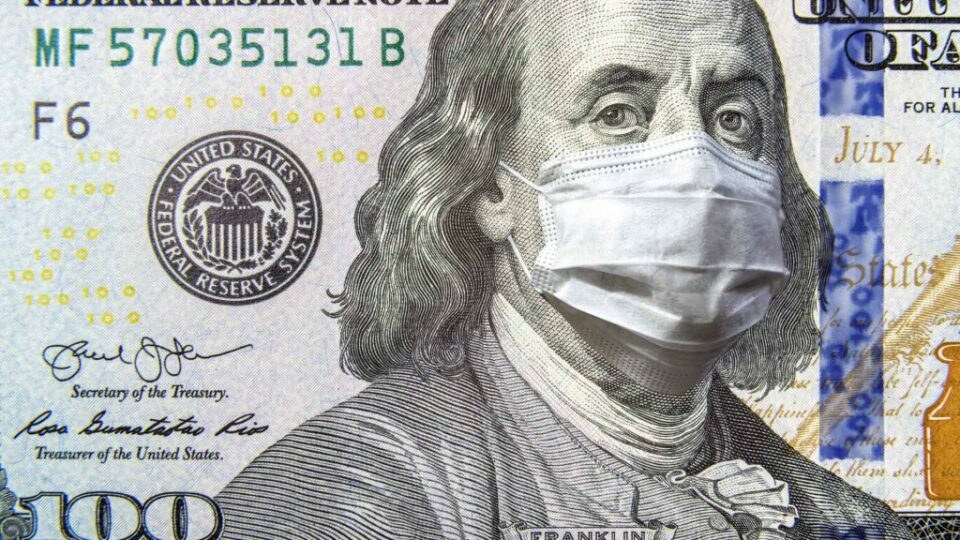Inflation and money supply indicate that gold has room to run. How long can rising interest rates and dollar strength suppress the price?
Key Takeaways:
- Inflation stayed hot last month, despite the relief in oil prices. Markets now expect more aggressive rate hikes from the Fed.
- A strong U.S. dollar and rising interest rates are putting immense pressure on gold. The long-term story looks good, but the short-term looks challenging.
- When analyzing inflation, it helps to look at pandemic-era money supply growth. All of a sudden, our modern predicament makes sense.
CPI, Still Strong
The Bureau of Labor Statistics released its latest inflation report yesterday. Markets were not happy. Consumer prices beat expectations yet again, rising 8.3% year-over-year. CPI has come down slightly from June’s 9.1% number, but remains miles above the Fed’s target.
Stocks and gold dropped sharply on the news. The U.S. dollar index, already up 18.6% in the last year, surged. The newest inflation numbers will force the Fed to continue hiking interest rates aggressively.
Many market participants were hoping for some relief on inflation, given how much oil prices and other commodities have dropped in recent months. Not so! Inflation remains stubborn despite the Fed’s record attempts to stamp it out.
Why?
Inflation is a complex phenomenon. We could blame Russia and Ukraine, COVID-19, crimped supply chains, a tight labor market, Biden’s aggressive fiscal spending, or the Fed’s failure to raise interest rates sooner.
But perhaps the story has a simpler explanation.
Revisiting Money Supply
In January 2020, M2 money supply (the quantity of currency in the economy) was $15.5 trillion. Today, M2 money supply is $21.7 trillion. During the pandemic, the Federal Reserve nearly doubled the money supply.
It took 107 years for the money supply to reach $15.5 trillion (the Federal Reserve was created in 1913). In that time, the U.S. dollar lost nearly 98% of its purchasing power. In just two years, the Fed succeeded in increasing the money supply by another $6.2 trillion.
To be fair, the Fed had reasons to take such drastic measures with the money supply. But for all their Ph.D.s, modern theories on money, and complex economic modeling programs, they seem to have forgotten the lessons in Economics 101: lots of free money means lots of inflation.
Inflation will remain painfully stubborn until consumer prices catch up to our artificially inflated money supply. When will this happen? No one knows for sure – especially not the Ph.D.s and economic models.
Gold: Room to Run
Since January 2020, when M2 money supply was a mere $15.5 trillion, the price of gold has only increased about 11% (from $1,530/ounce to $1,697/ounce today).
This is a great sign for gold investors. M2 money supply is an important indicator for gold. Gold is priced in U.S. dollars. The more U.S. dollars are printed, the more we can stuff into the limited supply of gold on earth. Over the last several years, the gold/M2 ratio has fallen drastically, which indicates a strong entry point for gold.
If we zoom out to a 50-year chart, we see how undervalued gold is compared to M2 money supply. Over the next several years, we expect this ratio to rise to its historical average.
So far, a strong dollar and rising interest rates have prevented gold from experiencing the same inflation we are seeing in vehicles, food, housing, rent, medical care, energy, and nearly every other product consumers spend money on.
Rest assured, it will come.
Secure gold savings, without the excessive fees
Your weekly gold market commentary comes from our internal team of researchers and technical experts. Vaulted gives modern investors access to physical gold ownership at the best cost structure in the industry. With personal advising from industry experts and access to premier precious metals strategies, Vaulted is the key to life-long financial prosperity. Start protecting your portfolio today.
As always, thank you so much for reading – and happy investing!
Additional Resources:
U.S. mortgage interest rates top 6% for first time since 2008 (Reuters)
Driven by consumers, US inflation grows more persistent (AP News)
Food prices are still soaring – here’s what’s getting more expensive (CNN Business)
Analysis: Why the dollar’s wrecking-ball rally is not done yet (Reuters)
Economists braced for Fed to pursue steep rate rises beyond September (Financial Times)











